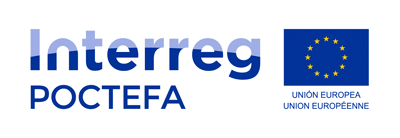Natural Sites
8 Protected natural areas to discover
1
The pine forest and the dunes of the Mas de l'Isle in Barcarès
It is a classified wooded area (EBC) characterized on the seafront, by a dune environment in good condition. If the plant variety is relatively weak in the wooded part, its diversity is very important on the transitional zone between the forest and the dunes. Numerous paths crisscross this area and one can walk there to enjoy the iodized air and the cover of the trees during the summer heat. Its main threat is the state of the forest, affected by a parasitic insect, the Pine Hyssop. Cutting and restoration works are in progress to preserve the site.
2
THE SOULSOURE IN SAINT-HIPPOLYTE
This site, located on the south shore of the Salses-Leucate pond, is characterized by a vegetation typical of brackish environments. Numerous plant species host an exceptional diversity of birds. Take advantage of a family walk to discover the site thanks to the wooden footbridges, which, in addition to guiding you to the best places, allow the vegetation not to suffer from repeated trampling.
3
THE SAGNET IN SAINT-HIPPOLYTE
Located a few steps away from the Soulsoure site, the Sagnette is also home to a great diversity of plants and animals. The main element that differentiates it is the presence of a fresh water resurgence, allowing new species that do not tolerate the presence of salt, to settle there. It is the presence of this spring that gave its name to the beautiful hamlet: Font del Port, literally the fountain
of the port. Sailors stopping over in the port of Barcarès used to come by boat to this hamlet to refill their drinking water supplies. You will find there beautiful Catalan boats, as well as a fishermen's hut hosting a museum dedicated to these boats.
4
The Bourdigou and "La Ribere Maren de Petit" in Torreilles
The site is nestled between the Agly and the Mediterranean. Its location and its preserved environments make it a privileged habitat for many species.
Pedestrian and bicycle paths are laid out to allow you to discover it without damaging it. You will discover, on the seafront, the remains of the bunkers built during the Second World War. The astonishing particularity of this site is the presence of two fresh water resurgences, only a few meters from the sea!
5
The pond of Canet Saint-nazaire
A vast and varied lagoon complex, the pond of Canet-Saint-Nazaire is a haven of peace for birds. Beaches, scrub, shallow water or reed beds, grassy moors or wooded areas, the habitats are numerous and contain biological rarities. Known for its population of pink flamingos, the pond welcomes nearly 300 species of birds, both sedentary and migratory. The dune cordon, separating the sea from the lagoon, is home to other plant and animal species that are as emblematic as they are patrimonial. In the spring, a developed area is strictly forbidden of access. It allows a species of bird, the Little Tern, nesting in the sand, to install its nest without the risk of it being trampled. On the pond side, you will find the famous fisherman's huts traditionally built with phragmites reeds. The view on the Canigou at sunset is breathtaking!
6
Wet wasteland of torremilla
This area, which seems so common at first glance, is nevertheless home to an amazing biodiversity. Some plants and animals have even chosen this place as the only place to live in all of France! This characteristic comes from the fact that the dry and Mediterranean vegetation benefits from small streams that are fed with water for a large part of the year.
7
The temporary pond of opoul
This natural environment is exceptional in every way. Its small size and its refined appearance nevertheless hide rarities which make it a place of patrimonial importance. Installed on a clay bed, the Opoul pond has
the incredible characteristic of being a temporary pond. It can remain several years without being fed with water, although in general it is in water the winter and dried up the summer. This particularity makes the happiness of rare species of amphibians, but especially of a prehistoric relic, the Triops! This strange animal, close to crustaceans and horseshoe crabs, appreciates temporary pools such as this one. The eggs of the Triops, once dried, can remain in a dormant state for several years. The site of Opoul hosts a particular population of Triops. Its individuals have 7 legs, instead of the usual 6 of the species. Studies are underway to determine if it is a subspecies.
8
The Lake of Bouzigues
Created by the Fishing Federation on the site of a former quarry, the Bouzigues lake, the only natural area managed by Perpignan Méditerranée Métropole without an environmental label, is not without interest. Its wooded banks are home to many species of birds and the depth of its waters allows the development of fish populations. The shores of the lake are equipped with various facilities, such as an observatory, benches and a fishing pier. Fishing is authorized for part of the year, and a quiet zone, formally forbidden to access, has been set up to let birds and fish rest without being disturbed. The lake of Bouzigues benefits from the connection with the soft way Es Tet, which goes along the Têt and which connects the hinterland to the littoral. Take advantage of this privileged access to reach the lake of Bouzigues by bike!


